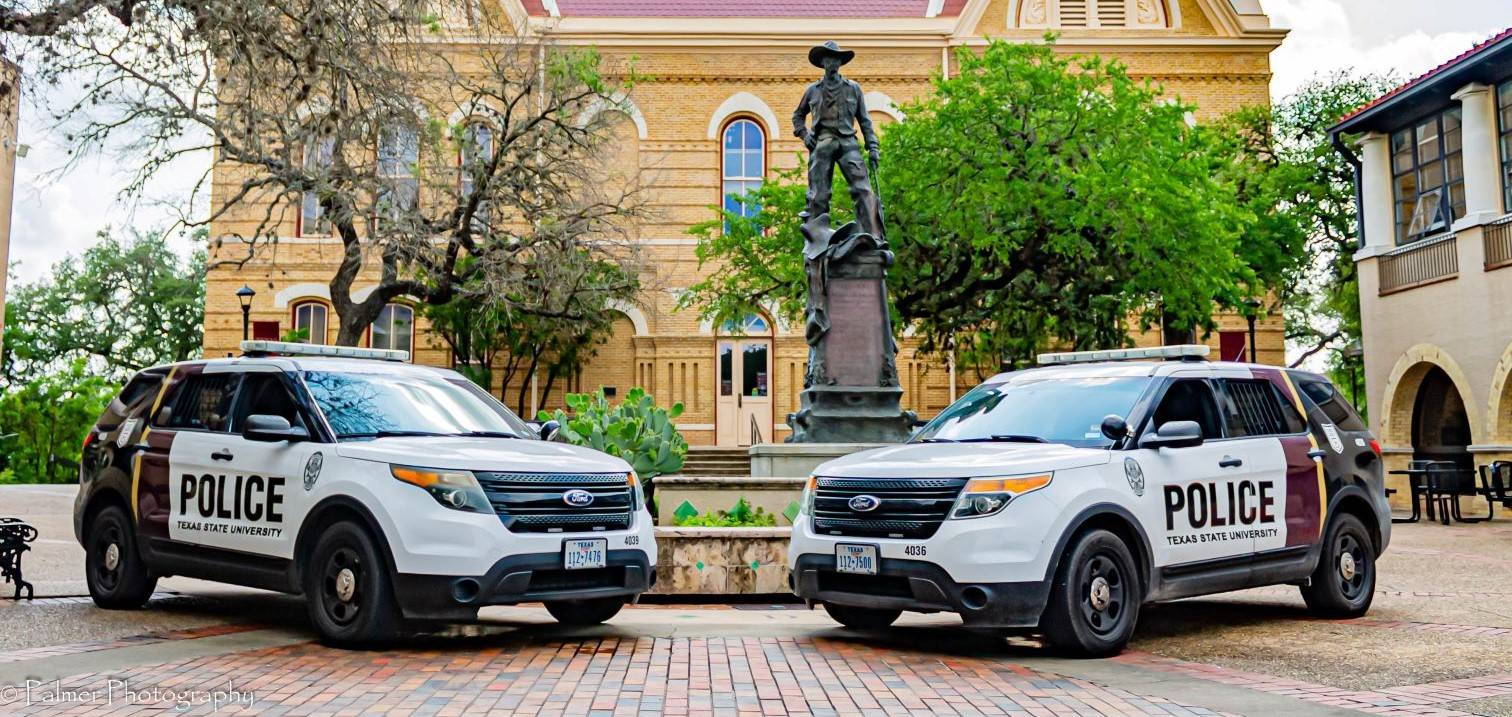Cite & Release — Cite & Divert
The University Police Department (UPD) is committed to the tenets of procedural justice and providing opportunities to our community. Toward this effort, UPD met with our Hays County law enforcement partners and committed to participate in joint cite and release and cite and divert efforts to better serve our communities. In the spirit of transparency, it is important to share information about these additional options with our community and shed light on important UPD practices that go above and beyond those commonly used by other law enforcement agencies. Cite and release is a currently available option and the anticipated date for cite and divert is October 1, 2020.
What is cite and release?
Cite and release is authorized under article 14.06 of the Texas Code of Criminal Procedure that provides a process for law enforcement to issue a ticket in lieu of arrest for certain offenses. They are:
- Class C misdemeanors other than public intoxication, assault, or family violence.
- Possession of Marijuana less than 4 oz.
- Driving while License Invalid, Class B misdemeanor
- Criminal Mischief, Class B misdemeanor
- Graffiti, Class B misdemeanor if the amount of pecuniary loss is less than or equal to $375.
- Theft of Property, Class B misdemeanor — if the value of property stolen is less than or equal to $375.
- Theft of Services, Class B misdemeanor — if the value of service stolen is less than or equal to $375.
Cite and Release may not be appropriate in all instances and arrest may be necessary if:
- The subject does not provide satisfactory evidence of personal identification to allow for citation.
- The subject is not a resident of the county in which the offense was allegedly committed.
- The arresting officer believes that the safety of persons (including the subject) would be imminently endangered by the release of the subject.
- The subject demands to be taken before a magistrate.
- The subject has an outstanding arrest warrant from a criminal law enforcement agency.
- The subject is also suspected of having committed an offense for which the cite and release process is not allowed by state law.
Cite and Release allows a person to avoid being taken into custody at the time of the offense and to instead receive a citation with written instructions to appear at the jail at a future date. At that time, the person goes through the booking process, to include fingerprinting and providing a booking photograph, just as they would have if initially taken into custody. The benefit to cite and release is that the arrest and booking is deferred to a later date. The criminal case will still proceed as normal, meaning that the person will still have to get a lawyer, appear in court, and pay court costs and other fines.
How is UPD going beyond cite and release?
Possession of Marijuana is an eligible cite and release offense, but, if UPD used cite and release in these situations, our students would be issued citations that would still result in criminal cases, jail processing and the court process described above.
Instead, UPD routinely issues a Class C citation, essentially a ticket, for Possession of Drug Paraphernalia, rather than the Class B charge of Possession of Marijuana, when they encounter small amounts of marijuana.
In fact, in 2019, UPD officers issued these Class C citations in approximately 80% of possession of marijuana cases that were eligible for cite and release, therefore eliminating the criminal case process. Class C citations are handled through the City of San Marcos municipal court and generally only require a fine.
What is cite and divert and how is it different?
Cite and divert adds a diversion aspect to the cite and release program, giving people who qualify for the program a chance to avoid having the offense ever filed in court and becoming part of their criminal record.
How does cite and divert work?
After receiving the citation, rather than going through the booking process and appearing before a magistrate, eligible persons will have an opportunity to meet with a prosecutor from the Hays County Criminal District Attorney’s Office who may determine that a course of diversion is most appropriate. Diversion can include many different approaches such as educational courses, treatment, community service, or paying restitution, all of which may be less expensive or less time consuming than going through the more formalized judicial process. Once the person satisfies the requirements determined by the prosecutor, the program successfully concludes, and their record remains clear of that offense.
Will UPD use cite and release and cite and divert?
UPD is committed to serving our community with policies and actions that prioritize the well-being of Texas State students. We are guided by our law enforcement philosophy of community policing, procedural justice, and transparency. As we have demonstrated in the past, when appropriate, UPD will continue to use tools that are the least punitive for our students. As your Police Chief, I can assure you that we will use these options to best serve the Bobcat community. UPD is grateful to serve TXST.
